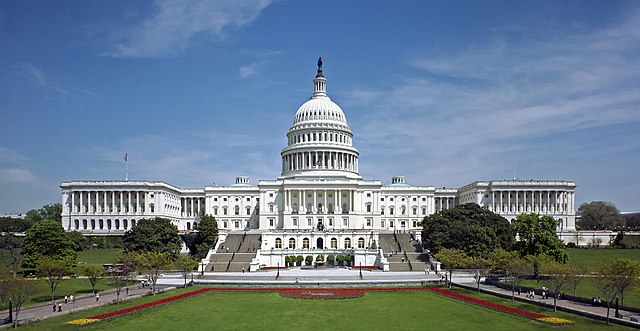The United States Senate is the upper chamber of the United States Congress. The United States Senate and the lower chamber of Congress, the United States House of Representatives, comprise the federal bicameral legislature of the United States. Together, the Senate and the House maintain authority under Article One of the U.S. Constitution to pass or defeat federal legislation. The Senate has exclusive power to confirm U.S. presidential appointments, approve or reject treaties, and try cases of impeachment brought by the House. The Senate and the House provide a check and balance on the powers of the executive and judicial branches of government.
United States Senate
A typical Senate desk on the floor of the United States Senate
The Senate side of the United States Capitol in Washington, D.C.
Committee Room 226 in the Dirksen Senate Office Building, used for hearings by the Senate Judiciary Committee
The United States Congress is the legislature of the federal government of the United States. It is bicameral, composed of a lower body, the House of Representatives, and an upper body, the Senate. It meets in the U.S. Capitol in Washington, D.C. Senators and representatives are chosen through direct election, though vacancies in the Senate may be filled by a governor's appointment. Congress has 535 voting members: 100 senators and 435 representatives. The U.S. vice president has a vote in the Senate only when senators are evenly divided. The House of Representatives has six non-voting members.
United States Congress
In 1868, this committee of representatives prosecuted President Andrew Johnson in his impeachment trial, but the Senate did not convict him.
The 1940 painting Scene at the Signing of the Constitution of the United States, depicting George Washington presiding over the signing of the United States Constitution
United States Congress c. 1915








